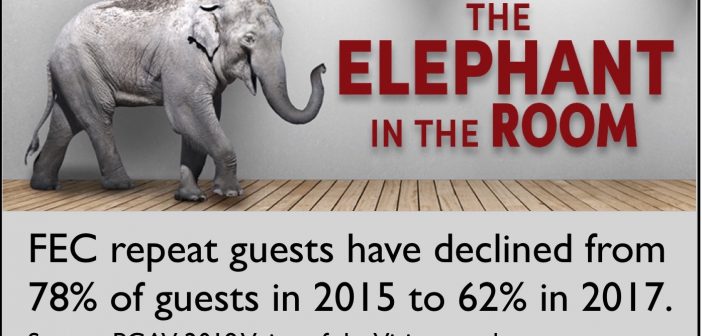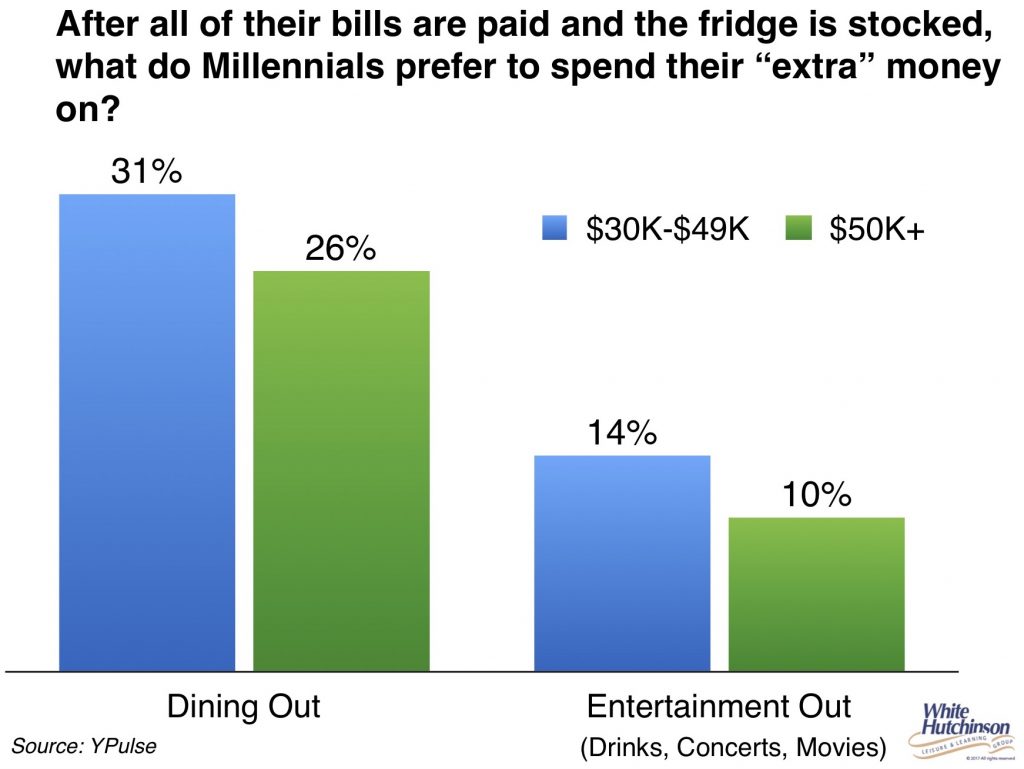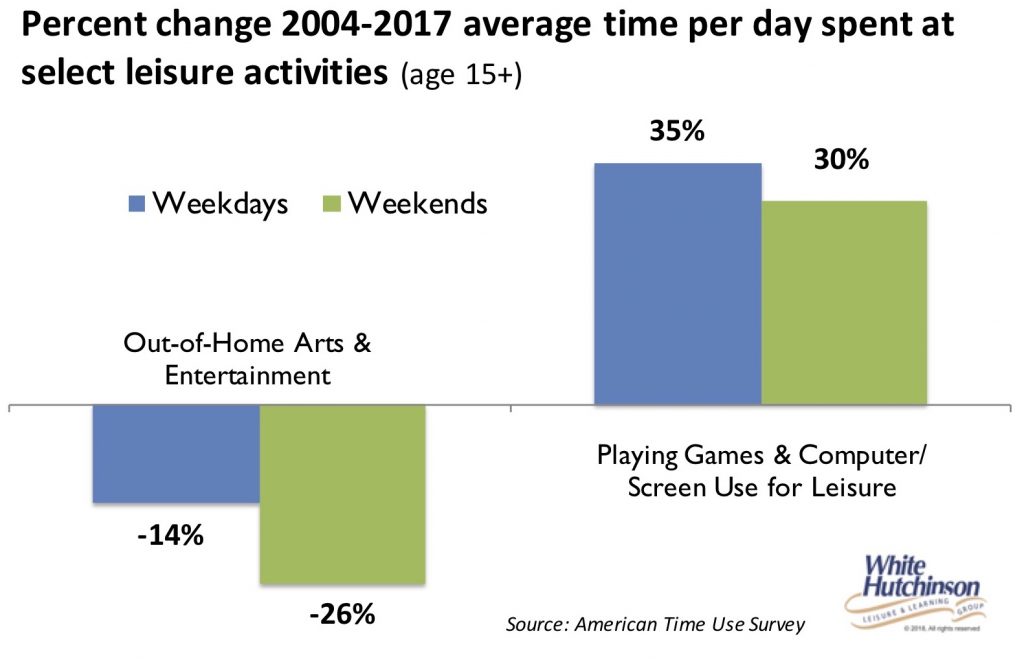The Elephant in the Room
FEC Repeat Appeal May Have Lost Its Mojo

Randy White
By Randy White, CEO/White Hutchison Leisure & Learning Group
I’ve been working in the FEC industry for more than 29 years. Over the last decade, I’ve seen a rapid acceleration of disruptions to the traditional FEC model and one of the most disruptive of these is the loss of repeat appeal.
When the FEC industry first emerged three decades ago, there weren’t very many out-of-home entertainment options, mostly just zoos, theme parks, bowling alleys and a few miscellaneous venues. With fewer options, those FECs had repeat appeal as people’s local out-of-home entertainment options were so limited.
So, FECs evolved with repeat appeal being an essential component of its business model. With smaller trade area populations compared to regional attractions, getting guests to attend a number of times a year allowed FECs to achieve the attendance and revenues needed to be financially viable. And back then, that worked.
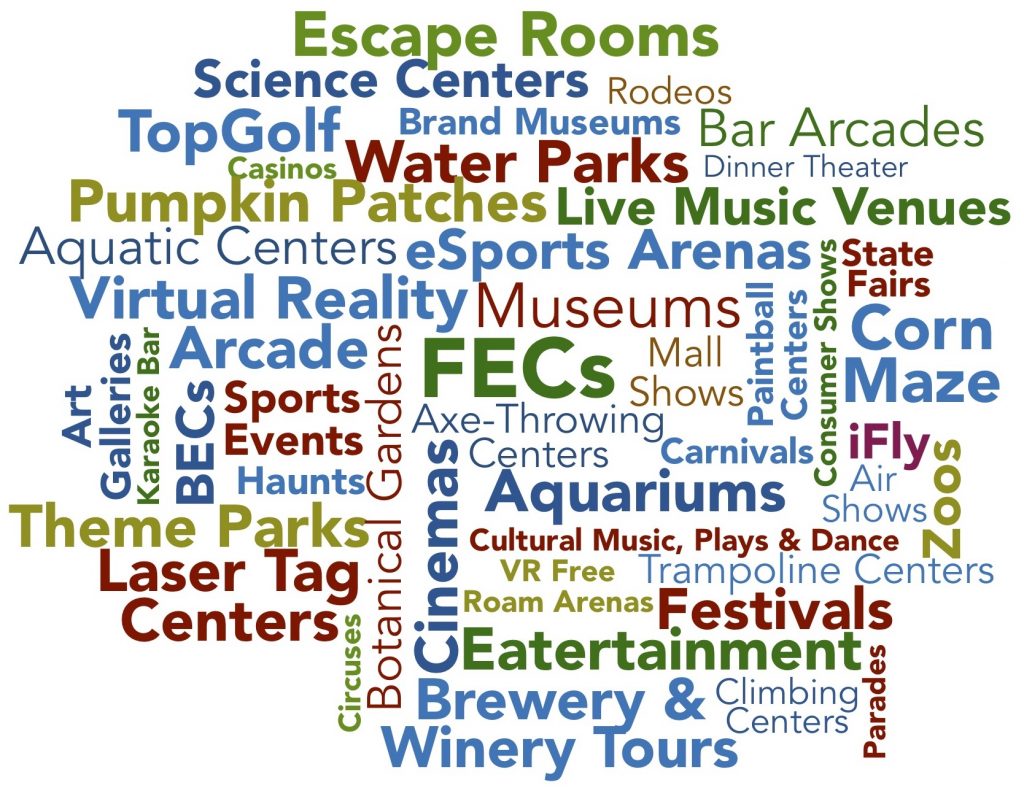
Today, it’s a whole new ballgame and we see that repeat appeal has lost its mojo. A PGAV Destinations survey found that FEC repeat guests have declined from 78 percent in 2015 to 62 percent in 2017. That’s a one-fifth reduction. That survey also found that attendance at FECs has declined by 2.2 percent between 2016 and 2017, probably as a result of the decline in repeat business.
There’s a number of factors that are resulting in traditional formula FECs losing their repeat appeal:
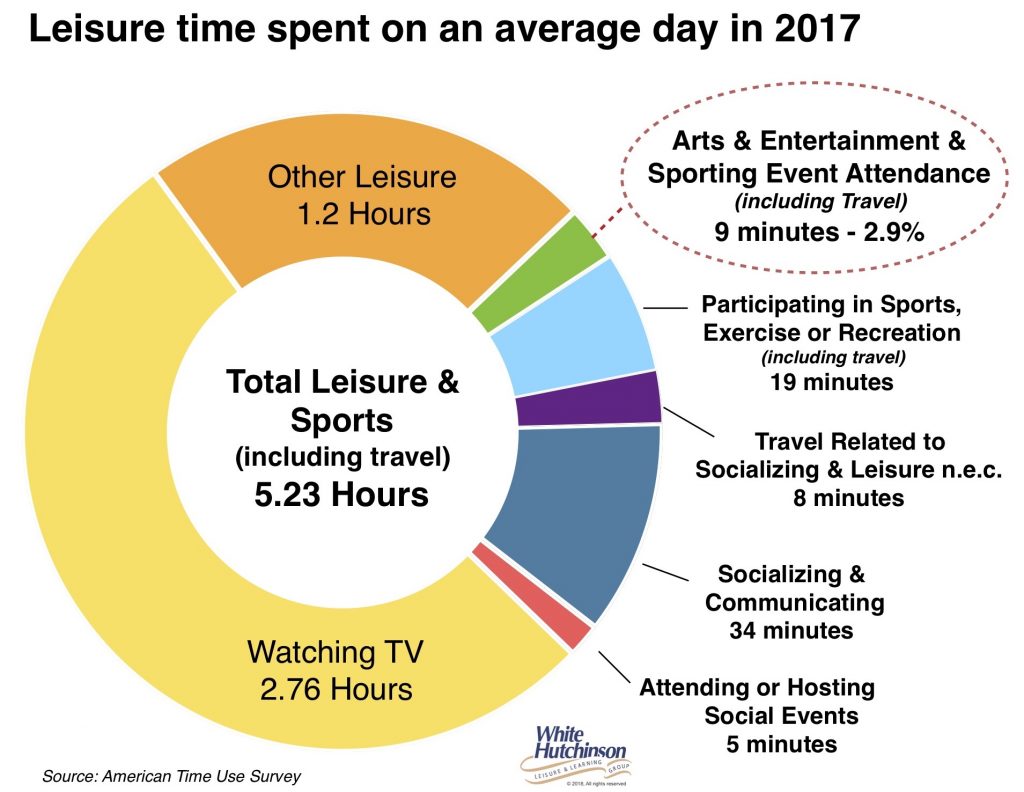 Increased Options
Increased Options
Today, the out-of-home entertainment landscape is flooded with options and variety when it comes to where consumers can spend their leisure time and discretionary spending, with the number constantly expanding.
It’s already an over-crowded situation in many markets with too many entertainment-oriented venues, including multiple FECs, all competing for the just nine minutes of leisure time a day (slightly more than an hour each week) the average American age 15+ spends attending and traveling to and from all arts, entertainment and sports venues.
Restaurants Are Now Entertainment
The character of restaurant visits has dramatically changed. Many visits to restaurants are now considered as entertainment, competing for the time that was previously owned exclusively by entertainment-oriented venues. This, of course, has a lot to do with the foodie revolution of culinary adventure and discovery.
Research by YPulse found that the vast majority of Millennials (62 percent) –– the prime target market for most entertainment venues –– considers a good night out to be more about the food than the entertainment. And when we look at those with the most discretionary spending –– Millennials with $50,000 and above incomes –– one in four (26 percent) prefers to spend his extra money on dining out, while only 10 percent prefer to spend it on entertainment out (concerts, movies, etc.).
Permanxiety
Today, we experience a near-constant state of anxiety, what is called Permanxiety. We endure a barrage of worries about terrorism, security, neo-isolationism, racial tension, political friction, technology and its adverse role, the widening economic gap, culture wars, climate change, and other geopolitical and local issues.
Permanxiety leads to the trend that futurist Faith Popcorn and her BrainReserve company describes as “bunkering,” which means uber-cocooning at home and going out less often. She says Americans are seeking safety and escape from Permanxiety by retreating into the seclusion and safety of their homes.
Hyggeling
A related new trend called Hygge, a Danish word that refers to “the constant pursuit of homespun pleasures,” is also fueling staying at home. Examples of a very typical hygge activity are curling up in a blanket on the couch in cozy sweats with some enjoyable drink while binge-watching Netflix or reading a book in front of a fireplace.
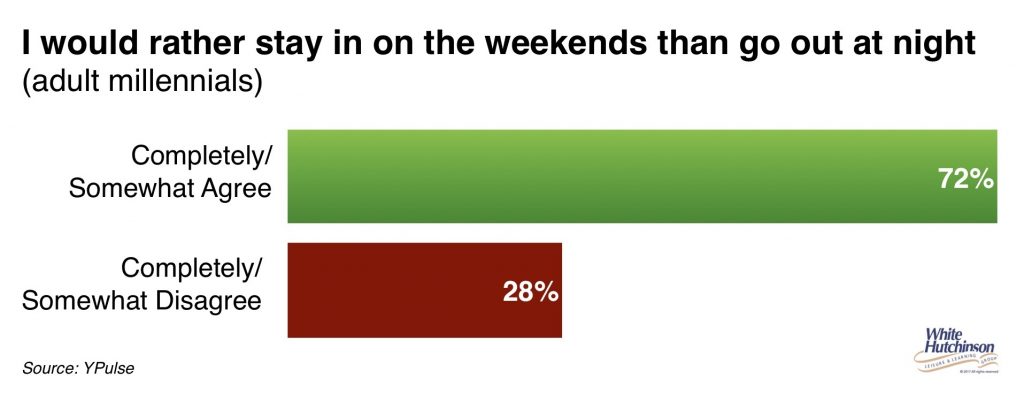
At-Home Entertainment
Technology and the digital world have brought us many attractive entertainment options we now enjoy at home, including all types of video games, some where we socialize with friends while they are in their own homes, and high-definition screens upon which we can stream movies, watch sports on and binge-watch shows. And now, we have emerging VR and AR options, which in a few years may reach mass appeal status.
The YPulse survey on Millennial spending found that almost three in four of Millennials (72 percent) would rather stay in on the weekends that go out at night.
As a result of the plethora of at-home digital options, Permanxiety and hyggeling, we have shifted some of both our leisure time and leisure spending from out-of-home entertainment to simply staying in. Staying home has become the new going out.
Experiential CV & Seeking Novelty
Another factor for the declining repeat appeal of FECs is people’s desire for new experiences. It’s all about a culture of novelty seeking and the pursuit of new, unique and sharable out-of-home experiences.
Our brains are programmed by evolution to crave novelty. The desire to explore something new is rooted in enabling us to learn sofething new about how to survive. Novelty triggers the production of dopamine, which, in turn, increases a person’s motivation to act.
Our priorities have changed for what we pursue as new. In today’s experience economy, we no longer collect new stuff for status, to “Keep up with the Joneses.” We now collect new and memorable experiences to add to our Experiential CVs that we share on social media to reflect who we want to be seen as and to gain social capital and bragging rights. For many people, especially the 20- and 30-somethings, if an experience isn’t Instagrammable, it’s not worth going to.
The vast majority of Americans now have the desire for adventure and discovery when it comes to experiences. So, when we do decide to leave home, rather than repeat same old, same old, we quickly move on to one of the many available new experiences to add to our Experiential CVs.
PGAV’s Voice of the Industry report said that 2017 marked the “Year of the New” for many attraction guests. The study found a marked uptick in the percentage of visitors looking for new experiences. New and unique experiences were rated in their survey as four of the top five most important qualities for visiting an attraction venue.
Peoples’ desire to collect a variety of experiences is also driven by their desire not to waste their limited leisure time, as checking off items on their Experiential CVs to-do list creates the feeling that they used their leisure time productively.
The Appeal of Festivals
Among the large increase in the variety of the out-of-home options people have today are festivals of all types including, wine, beer, food, art, music and ethnic. Festivals have an advantage over all-year venues because they are unique, buzz-worthy experiences and limited time offerings (LTOs) where FOMO (fear of missing out) drives attendance, as friends fear missing out on both important social interactions, as well as the opportunity to share important moments on social media. Festivals are perfect additions to Experiential CVs.
A September 2017 survey of U.K Millennials found that there is a move away from more traditional forms of entertainment. Tickets to events and festivals now represent almost half (47 percent) of all the going-out money spent by this demographic. Almost two-thirds went to at least one live event or festival in the past year (62 percent), and of those that did, they went to an average of 2.3 festivals that year. Another 2016 survey found that more than half of Millennials (51 percent) go to festivals “to experience something new.”
Also, 80 percent of U.K. Millennials said they would sacrifice something in their lives to fund going to more festivals/events. One in three would be willing to sell their possessions on eBay to pay for a festival ticket. Even newer passions are not safe: One in eight would give up their Netflix or Spotify premium account and one in six Uber. One in 10 would even stop buying birthday or Christmas presents to pay for a festival ticket.

Four in 10 Millennials say they want to go to more food festivals. They’re willing to make sacrifices in their day-to-day eating habits to pay to attend more food-based events; four in 10 are willing to give up take-out food and one in three would take a packed lunch to work/college to save money.
Attendance at festivals is up in the U.S. as well. Statistics show 29 percent of U.S. Millennials attended a music festival in the 12 months ending April 2017, up from only 17 percent in 2014. That’s nearly a doubling of the attendance rate in just three years.
Our company’s national surveys found that adults in $100,000+ income households (21 percent of all households) make up 58 percent of all festival attendees. And they are not limited to Millennials, but older adults as well.
So, just how many festival options are there today in the U.S.? To get a general idea of the number each year in a “typical” U.S. city, we tallied those that took place in the Kansas City metropolitan area from August 2017 to July 2018. We were surprised to find 133 (and we probably missed several dozen more simply because they didn’t have the word “festival” in their names). Over the past Labor Day weekend alone, there were seven such events.
Research by EventBrite shows that Americans are attending more live events, including festivals, than ever before. EventBrite says the increased preferences for live experiences is being driven by a strong desire to connect with people, the community and the world. Their research found that four in five Americans (78 percent) attended a live event in the 12 months that ended May 2017. For Millennials, the participation rate was 90 percent, an increase from 82 percent just three years earlier. Half of them said they attended a live event so they had something to share online (again, they’re concerned with building their Experiential CVs and social capital).
Festivals and live events are definitely new and significant competition to both first time and repeat visits to an FEC.
Implications for FECs
The classic FEC business model based upon repeat business has been totally disrupted by new competition and changed lifestyles and values, including: people bunkering down in their homes with their digital entertainment options (reducing the time they have to visit entertainment venues), and when they do leave home, rather than repeat an experience (been there, done that), they’re moving on to new, unique ones to grow their Experiential CVs (with festivals, live events and restaurants now among some of their top choices).
Today, offering one or a combination of year-round entertainment attractions and counting on consumers’ desires to repeat the experience –– whether it’s bowling, go-karts, laser tag or some other attraction –– is no longer a sustainable, successful business formula, no matter how good the quality of the attraction might be.
Since the concept that an attraction can drive repeat visits for multiple years no longer works, today’s out-of-home entertainment industry requires a new set of rules and strategies for success.
Strategies
The first new rule is that the experience needs to constantly change and/or there needs to be new and unique ones to get people to return. Many of the successful, new model entertainment venues are using food and drink limited-time offers, as well as limited-time special and live events, as their key attendance and revenue drivers.
The second new rule is that that you have to be the best at more than one thing. It used to be you could be successful by being the best at something and “good enough” at everything else. The traditional FEC formula was to offer some entertainment attraction that was the best in its trade area, and then everything else offered, whether it was birthday parties or snack bar food and beverage only had to be good enough (which often meant “not terrible”).
That formula no longer works, even to get people in for their first visit, let alone repeat visits. Reviews on social media give consumers all the information they need to curate which new experiences they want to visit. With all the competition today for people’s leisure time and money, you have to be great at all aspects of the experience you offer in order to stand out from the crowd and be worthy of a visit. And by great, that doesn’t mean the best in your trade area, but rather great based on consumers’ high expectations that are formed by every place and every type business they interact with, including when traveling and on vacation. Today, the bar for winning is much higher than in the past.
Some of the most successful new-school entertainment-oriented venues today are great at not just the entertainment, but also their food and beverage, to the level where the food and beverage offerings end up being the “anchor destination attraction,” generating more revenue than the entertainment. These locations also aren’t focused on the attractions as entertainment per se, but rather as facilitators of a great social experience.
The formula for success in the FEC industry is dramatically different than just a decade or so ago. Don’t be a prisoner of yesterday’s paradigm that attractions drive repeat appeal. It just isn’t so.
The White Hutchinson Leisure & Learning Group is a multi-disciplinary firm specializing in feasibility, concept and brand development, design and consulting for entertainment facilities. Over the past 26 years, the company has worked for over 500 clients in 32 countries, and won 16 first-place design awards. It publishes an occasional Leisure eNewsletter and Tweets (@whitehutchinson); Randy blogs. He is also a founder, co-regent and presenter at Foundations Entertainment University, now in its 13th year. Randy can be reached at 816/931-1040, ext. 100, or via the company’s website at www.white hutchinson.com. © 2015 White Hutchinson Leisure & Learning Group

